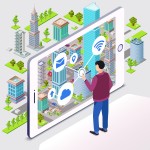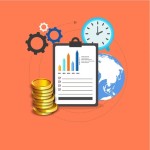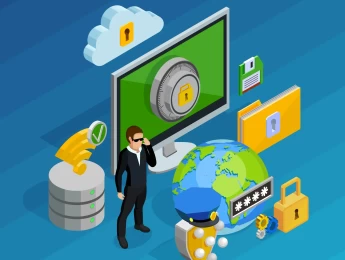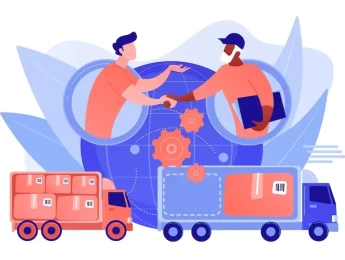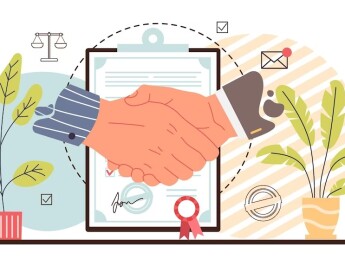- Table of Contents
- Introduction
- What Is Sustainable Construction?
- How Can You Tell If an Area Is Sustainably Built?
- a) Certifications and Ratings
- b) Energy Efficiency
- c) Use of Recycled or Renewable Materials
- d) Water Conservation
- e) Green Spaces
- Statistics on the Impact of Traditional Sustainability on the Environment
- Sustainable Construction Methods
- 1. Prefabrication
- 2. Adaptive Reuse
- 3. Zero-Energy Buildings
- 4. Green Roofs and Walls
- 5. Water-Saving Technologies
- Sustainable Tools and Technologies Used in Sustainable Construction
- 1. Building Information Modelling (BIM)
- 2. Smart Building Systems
- 3. Recycled and Reusable Materials
- 4. Renewable Energy Systems
- 5. Digital Twin Technology
- 10 Benefits of Sustainable Construction
- Environmental Benefits:
- Economic Benefits:
- Social Benefits:
- Challenges of Implementing Sustainable Construction
- Initial Costs
- Lack of Awareness
- Regulatory Barriers
- Limited Availability of Sustainable Materials
- Resistance to Change
- Complexity in Measurement and Certification
- Integration with Existing Infrastructure
- Educational Gaps in the Industry
- Limited Scalability of Sustainable Technologies
- Perceived Incompatibility with Design Preferences
- Conclusion
Introduction
As our world grapples with the challenges of climate change and environmental degradation, the construction industry has emerged as a key player in the pursuit of sustainable solutions. Sustainable construction is not just a buzzword; it's a paradigm shift that focuses on creating buildings and infrastructure with minimal environmental impact while promoting economic viability and social responsibility. In this comprehensive guide, we'll delve into the core aspects of sustainable construction, exploring its definition, methods, technologies, and the myriad benefits it offers, as well as the challenges it faces.
What Is Sustainable Construction?
Sustainable construction, often referred to as green building, is an approach to building that prioritises environmental, economic, and social responsibility. It seeks to minimise the negative impacts of construction on the environment and human health throughout the entire life cycle of a building. This encompasses the selection of materials, design, construction methods, operation, maintenance, and eventual demolition or deconstruction.
Sustainable construction goes beyond simply incorporating energy-efficient technologies. It involves a holistic perspective, considering factors such as resource conservation, waste reduction, and the well-being of the communities affected by the construction projects. By adopting this approach, the construction industry aims to create structures that contribute positively to the environment and society.
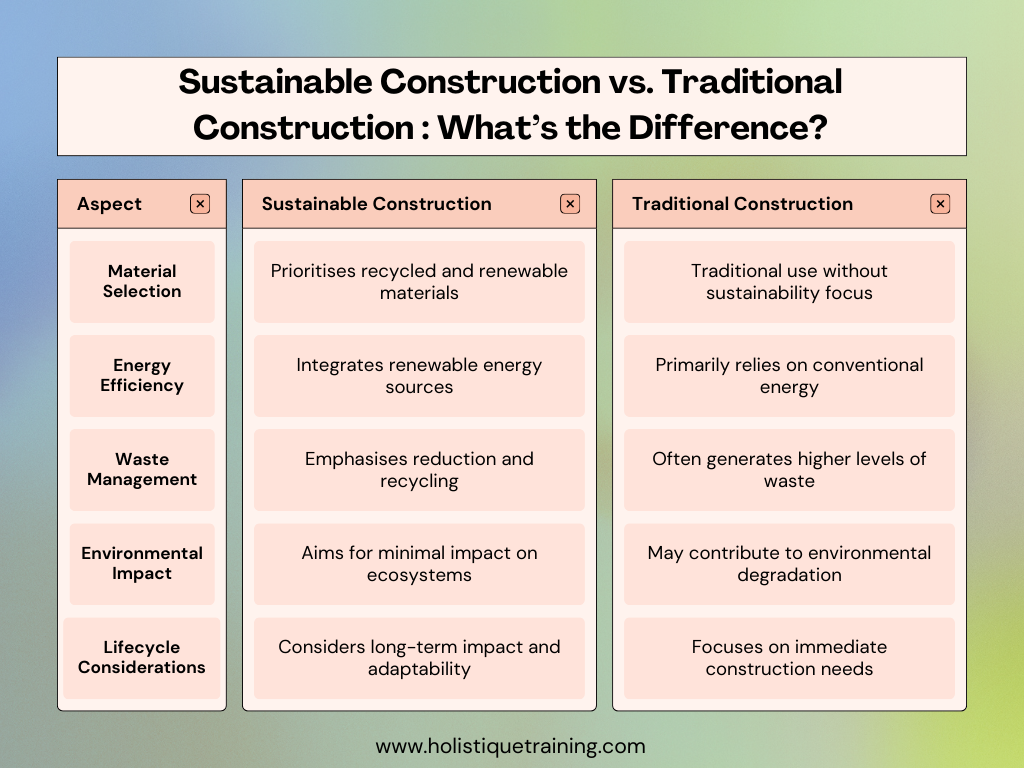
How Can You Tell If an Area Is Sustainably Built?
Identifying sustainable construction involves looking beyond the surface of a building or infrastructure project. Several indicators can help determine if an area is sustainably built:
a) Certifications and Ratings
One of the most reliable indicators of sustainable construction is the presence of certifications and ratings.LEED (Leadership in Energy and Environmental Design) andBREEAM (Building Research Establishment Environmental Assessment Method) certifications, among others, serve as benchmarks for sustainable building practices. These certifications consider a range of factors, including energy efficiency, water conservation, and the use of environmentally friendly materials. If a building or development project proudly displays one of these certifications, it's a clear signal of a commitment to sustainability.
b) Energy Efficiency
A sustainably built area prioritises energy efficiency in its design and operations. Look for buildings equipped with energy-efficient technologies such as LED lighting, smart climate control systems, and renewable energy sources like solar panels. Sustainable architecture often emphasises natural lighting and ventilation, reducing the reliance on artificial energy sources and promoting a more comfortable and eco-friendly living or working environment.
c) Use of Recycled or Renewable Materials
Sustainable construction places a premium on the responsible use of materials. Scan the landscape for structures made from recycled or renewable materials. From reclaimed wood and recycled steel to innovative materials like bamboo, the use of such resources not only reduces the demand for new materials but also minimises the environmental impact associated with extraction and processing.
d) Water Conservation
An area committed to sustainability integrates water-efficient technologies into its infrastructure. This includes low-flow faucets, rainwater harvesting systems, and intelligent irrigation systems. The visible presence of water-saving features in landscaping, coupled with an absence of excessive water runoff, indicates a thoughtful approach to water conservation in the construction and maintenance of the area.
e) Green Spaces
Sustainable construction goes beyond the confines of individual buildings to consider the overall ecological impact of an area. Green spaces, such as parks and community gardens, contribute not only to the aesthetic appeal of an area but also to biodiversity and community well-being. These green oases serve as a visual cue that the planners and developers have taken a holistic approach to urban development, promoting a balance between concrete structures and nature.
In essence, a sustainably built area is a testament to a community's commitment to environmental stewardship and responsible urban planning. It reflects a conscious effort to harmonise the needs of the present without compromising the ability of future generations to meet their own needs. So, the next time you wander through a cityscape or residential neighbourhood, look beyond the exterior of the buildings, and you might find a narrative of sustainability woven into the very foundations of the community.
Statistics on the Impact of Traditional Sustainability on the Environment
The construction industry, having inflicted considerable harm on the environment, faces an alarming reality. According to the United Nations Environment Programme (UNEP), the escalating construction activities and urbanisation pose a severe threat, with anticipated waste increase that could obliterate over 70% of the land surface by 2032, destroying vital natural resources and wildlife habitats. This grim prospect underscores the pressing need for sustainability in construction. Historically, the building sector has significantly contributed to environmental degradation, responsible for 45% of total CO2 emissions in the UK, 72% of household emissions related to space heating and hot water, and generating 32% of landfill waste from construction, according toConstruction21.
Sustainable Construction Methods
Achieving sustainability in construction involves adopting innovative methods that align with environmental and social goals. Some key sustainable construction methods include:
1. Prefabrication
Prefabrication, or off-site construction, stands as a beacon of efficiency and sustainability. In this method, building components are manufactured in a controlled factory environment and then transported to the construction site for assembly. This approach minimises waste, enhances precision in construction, and reduces the environmental impact of on-site activities. It's a symbiotic relationship between technology and sustainability, showcasing how modular construction techniques can revolutionise the industry.
2. Adaptive Reuse
In a world where urbanisation often leads to the demolition of older structures, adaptive reuse emerges as a sustainable alternative. This method involves repurposing existing buildings for new functions, thereby extending their lifespan. Not only does adaptive reuse conserve resources, but it also preserves the historical and cultural fabric of a community. Warehouses transformed into loft apartments and industrial spaces reborn as creative studios are tangible examples of how sustainable construction methods can breathe new life into old structures.
3. Zero-Energy Buildings
The concept of zero-energy buildings represents a pinnacle in sustainable construction. These structures are designed to produce as much energy as they consume, often incorporating renewable energy sources like solar panels, wind turbines, and geothermal systems. The integration of energy-efficient technologies, high-performance insulation, and smart building systems ensures that these structures operate at optimal efficiency, pushing the boundaries of what is possible in the quest for carbon neutrality.
4. Green Roofs and Walls
Green roofs and walls introduce a touch of nature to the concrete jungle. These features involve the cultivation of vegetation on building surfaces, providing numerous benefits. Not only do green roofs and walls enhance insulation, reducing the need for heating and cooling, but they also absorb rainwater, mitigate urban heat islands, and contribute to biodiversity. As architects and urban planners increasingly recognise the value of green spaces, these sustainable construction methods are becoming integral components of modern building design.
5. Water-Saving Technologies
Sustainable construction extends its influence beneath the surface with water-saving technologies. From efficient irrigation systems to greywater recycling, these methods minimise water consumption and help manage water resources more responsibly. Permeable pavements, for example, allow rainwater to infiltrate the ground, reducing surface runoff and alleviating pressure on stormwater drainage systems.
Sustainable construction methods embody a philosophy that extends beyond the completion of a project. They lay the foundation for structures that adapt to changing needs, embrace technological advancements, and foster resilience in the face of environmental challenges. As the construction industry continues to evolve, these methods serve as blueprints for a sustainable future, where innovation and environmental consciousness go hand in hand.
Table 1: Key Performance Indicators (KPIs) of a Sustainable Construction Project
Key Performance Indicators | Description |
Energy Efficiency | Minimising energy consumption through sustainable tech. |
Material Sustainability | Prioritising recycled and renewable materials use. |
Carbon Footprint Reduction | Strategies for lowering overall carbon emissions. |
Community Engagement Impact | Measuring the positive influence on local communities. |
Regulatory Compliance | Ensuring alignment with sustainable construction codes. |
Sustainable Tools and Technologies Used in Sustainable Construction
In the pursuit of sustainable construction, various tools and technologies play a crucial role in enhancing efficiency and minimising environmental impact:
1. Building Information Modelling (BIM)
At the forefront of technological innovation in construction is Building Information Modeling (BIM). This digital tool creates a comprehensive 3D representation of a building, integrating data about its physical and functional attributes. BIM facilitates collaboration among architects, engineers, and construction professionals, streamlining the design and construction processes. The result is not only increased efficiency but also a reduction in errors, waste, and resource consumption.
2. Smart Building Systems
The rise of the Internet of Things (IoT) has ushered in an era of smart building systems. These systems leverage sensors, actuators, and automation to monitor and control various aspects of a building's operations in real-time. From optimising lighting and temperature to managing energy consumption, smart building systems contribute to resource efficiency and occupant comfort. Occupancy sensors, for instance, adjust lighting and climate control based on room usage, minimising unnecessary energy expenditure.
3. Recycled and Reusable Materials
Sustainable construction relies on the innovation of materials that are both environmentally friendly and economically viable. Recycled and reusable materials play a central role in this transformation. Recycled steel, for example, reduces the demand for virgin materials and minimises the environmental impact of mining and manufacturing. Similarly, the development of modular and reusable building components contributes to the circular economy by extending the lifespan of materials and reducing construction waste.
4. Renewable Energy Systems
The integration of renewable energy systems is a cornerstone of sustainable construction. Solar panels, wind turbines, and geothermal systems harness energy from natural sources, reducing reliance on fossil fuels. These technologies not only generate clean energy but also contribute to lower operational costs over the lifecycle of a building. As advancements continue, the efficiency and affordability of renewable energy systems are driving their widespread adoption in sustainable construction projects.
5. Digital Twin Technology
Digital twin technology creates a virtual replica of a physical structure, allowing for real-time monitoring and analysis of its performance. This innovation extends beyond the construction phase, providing insights into energy usage, structural integrity, and maintenance needs throughout the building's lifecycle. By facilitating predictive maintenance and optimising operational efficiency, digital twin technology enhances the sustainability and longevity of structures.
Sustainable tools and technologies in construction embody a commitment to efficiency, environmental stewardship, and long-term resilience. As these innovations become more prevalent, they redefine not only how we construct buildings but also our relationship with the built environment. The synergy between sustainability and technology serves as a beacon, guiding the construction industry toward a future where structures are not just functional and aesthetically pleasing but also inherently responsible and adaptive.
10 Benefits of Sustainable Construction
Sustainable construction isn't just a trend; it's a transformative approach that yields a multitude of benefits, spanning environmental conservation, economic viability, and social well-being. The adoption of sustainable practices in the construction industry is akin to sowing seeds for a greener, more resilient future. Here are ten significant benefits that emanate from embracing sustainable construction principles:
Environmental Benefits:
1. Reduced Carbon Footprint
Sustainable construction minimises the carbon footprint of buildings and infrastructure. By incorporating energy-efficient technologies, renewable energy sources, and eco-friendly materials, these projects contribute significantly to the global effort to combat climate change. The reduction in greenhouse gas emissions stands as a testament to the environmental responsibility inherent in sustainable construction.
2. Resource Conservation
The use of recycled and renewable materials in sustainable construction helps conserve natural resources. By opting for materials with lower environmental impact and promoting responsible sourcing, these projects minimise the strain on ecosystems and reduce the depletion of finite resources, fostering a more sustainable relationship with the planet.
3. Biodiversity Preservation
Sustainable construction practices extend beyond buildings to embrace the surrounding environment. Green roofs, permeable pavements, and thoughtful landscaping contribute to biodiversity preservation. These features create habitats for flora and fauna in urban areas, promoting a healthier and more balanced ecosystem amidst the concrete jungle.
4. Water Conservation
Water-saving technologies implemented in sustainable construction, such as rainwater harvesting and efficient irrigation systems, play a pivotal role in water conservation. By minimising water consumption and managing stormwater effectively, these practices contribute to the sustainability of water resources in the face of growing global water scarcity concerns.
Economic Benefits:
5. Cost Savings in the Long Run
While the initial costs of sustainable construction may be higher, the long-term financial benefits are substantial. Energy-efficient designs, renewable energy systems, and durable materials contribute to reduced operational costs over the lifecycle of a building. The investment in sustainability pays off through lower energy bills, decreased maintenance expenses, and increased asset value.
6. Job Creation
The shift towards sustainable construction fosters job creation in burgeoning industries related to renewable energy, green technology, and eco-friendly materials. From manufacturing solar panels to constructing energy-efficient buildings, these emerging sectors offer employment opportunities while driving economic growth.
7. Increased Property Value
Sustainable buildings often enjoy increased demand from tenants and buyers. The emphasis on energy efficiency, eco-friendly features, and overall environmental responsibility makes these properties more attractive in the real estate market. As a result, property values tend to rise, providing financial returns for property owners and investors.
Social Benefits:
8. Improved Indoor Air Quality
Sustainable construction prioritises the well-being of occupants by using materials with low emissions and incorporating effective ventilation systems. The result is improved indoor air quality, creating healthier living and working environments. This focus on occupant health aligns with the broader goal of fostering communities that prioritise human well-being.
9. Enhanced Quality of Life
Well-designed sustainable communities contribute to an enhanced quality of life for residents. Access to green spaces, pedestrian-friendly layouts, and thoughtful urban planning create environments that promote physical and mental well-being. Sustainable construction principles recognise that buildings are not just structures but integral components of communities that impact the daily lives of their inhabitants.
10. Community Engagement
Sustainable construction often involves the local community in the planning and decision-making process. This engagement fosters a sense of ownership and pride among residents, who become active participants in shaping the sustainable future of their neighbourhoods. The collaborative approach to construction strengthens social bonds and empowers communities to take charge of their shared spaces.
In essence, sustainable construction transcends the immediate objectives of erecting buildings; it lays the groundwork for a harmonious coexistence between humanity and the environment. The benefits extend far beyond the construction site, creating a ripple effect that positively influences economies, societies, and the planet as a whole. Embracing sustainable construction is not just a choice; it's an investment in a brighter and more balanced future.
Challenges of Implementing Sustainable Construction
While the benefits of sustainable construction are compelling and transformative, the implementation of sustainable practices in the construction industry is not without its challenges. These hurdles, ranging from economic considerations to regulatory barriers, often test the commitment of stakeholders to embrace a more environmentally conscious and socially responsible approach. Here are some of the key challenges associated with the widespread adoption of sustainable construction:
Initial Costs
One of the primary challenges of sustainable construction lies in the upfront costs. Sustainable materials, technologies, and design processes can be more expensive than traditional alternatives. This poses a barrier for developers and investors, especially when short-term financial considerations take precedence over long-term environmental benefits. Convincing stakeholders to see sustainable construction as a worthwhile investment remains a persistent challenge.
Lack of Awareness
A significant obstacle in the path to sustainable construction is the lack of awareness among various stakeholders, including contractors, architects, clients, and the general public. Limited knowledge about sustainable practices, benefits, and available technologies can lead to resistance and scepticism. Bridging this awareness gap is crucial for fostering a broader understanding of the long-term advantages associated with sustainable construction.
Regulatory Barriers
Existing building codes and regulations in many regions may not adequately support or incentivise sustainable construction practices. While there is a growing recognition of the need for more environmentally friendly construction, aligning regulations with sustainable principles remains a challenge. Policymakers need to actively engage with the construction industry to update and adapt regulations to encourage and reward sustainable practices.
Limited Availability of Sustainable Materials
The availability of sustainable materials varies across regions, and in some cases, these materials may be more challenging to source compared to traditional counterparts. The construction industry relies heavily on the availability of materials, and the limited accessibility of sustainable options can hinder the widespread adoption of environmentally friendly construction practices.
Resistance to Change
The construction industry has a reputation for being slow to adopt new technologies and methods. The resistance to change, whether from construction professionals or established companies, can impede the integration of sustainable practices. Overcoming this inertia requires a cultural shift within the industry, emphasising the benefits and long-term gains associated with embracing sustainable construction.
Complexity in Measurement and Certification
Assessing and certifying the sustainability of construction projects can be complex. The myriad factors involved, from energy efficiency to material sourcing, make it challenging to develop standardised metrics. Certifications such as LEED and BREEAM have made strides in this area, but the complexity remains a hurdle for smaller projects and businesses that may lack the resources for comprehensive sustainability assessments.
Integration with Existing Infrastructure
Retrofitting existing structures to meet sustainable standards can be logistically challenging and economically demanding. Integrating sustainable practices into the fabric of existing infrastructure often involves disruptions, renovations, and considerable investments. Striking a balance between preserving historical structures and meeting modern sustainability standards requires careful planning and innovative solutions.
Educational Gaps in the Industry
The construction industry faces educational gaps related to sustainable practices. Training and education programmes that focus on sustainable construction methods are not universally integrated into construction curricula. Bridging this educational gap is crucial for ensuring that the next generation of construction professionals is well-equipped with the knowledge and skills necessary for sustainable building practices.
Limited Scalability of Sustainable Technologies
Some sustainable technologies and materials may face challenges in scalability. What works well for a small-scale project may not be easily replicable for larger developments. Innovations in sustainable construction must address scalability issues to make a significant impact on the industry.
Perceived Incompatibility with Design Preferences
Architects and designers may sometimes perceive sustainable construction practices as incompatible with their aesthetic preferences or design visions. Overcoming this challenge involves showcasing the versatility and aesthetic appeal of sustainable design, dispelling the notion that sustainability compromises architectural creativity.
Addressing these challenges requires a concerted effort from all stakeholders involved in the construction industry. Collaborative initiatives, government incentives, and advancements in technology and education are pivotal in overcoming these hurdles and establishing sustainable construction as the norm rather than the exception. As the industry evolves, navigating these challenges will be essential to creating a built environment that is truly sustainable and resilient.
Conclusion
Sustainable construction is not just a trend; it's a necessity for the future of our planet. By embracing innovative methods, technologies, and a holistic approach, the construction industry can play a pivotal role in mitigating climate change, preserving natural resources, and creating healthier, more resilient communities. While challenges exist, the benefits of sustainable construction far outweigh the obstacles, paving the way for a greener and more sustainable tomorrow. As we continue to build, let's build with purpose and a commitment to leaving a positive legacy for generations to come.
In our quest for a sustainable future, knowledge and expertise are powerful tools. If you're passionate about shaping a greener tomorrow through sustainable construction, consider enrolling in our course, ‘Sustainable Construction Project Design.’ Gain insights into cutting-edge methods, technologies, and holistic approaches that empower you to lead transformational projects. From energy-efficient designs to navigating regulatory landscapes, our course equips you with the skills to overcome challenges and spearhead sustainable initiatives. Join us in building not just structures, but a legacy of positive change. Enrol now and be at the forefront of the sustainable construction revolution. Together, let's design a future where every construction project is a step towards a more sustainable and resilient world.



